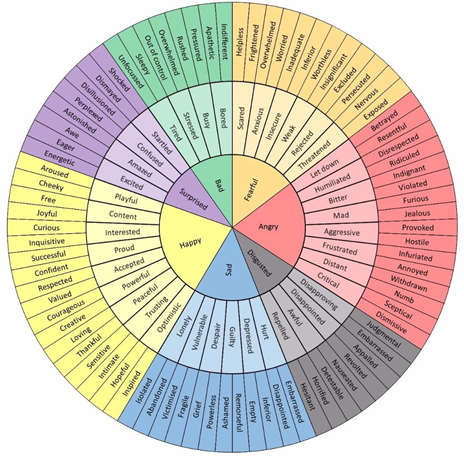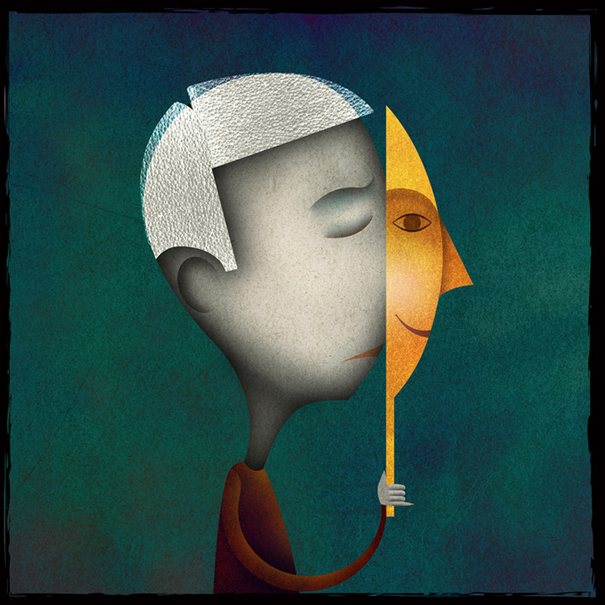Education
Emotions. They define you as a person and they define your characters. They'll help readers connect to the characters, engage them in the story, and keep them interested.
But emotions aren't easy to write. They are complex, abstract, and often very difficult to put into words. On top of that, people often don't just feel one single emotion, they feel a whole range of emotions all at the same time.
Let us start with the question: What are emotions? Many Wattpad authors fall into the caveat that they write intensely emotional scenes, but forget to show the emotional impact it has on the characters. Emotion isn't the situation or event, no matter how emotional it might be. Emotion is the feelings these events evoke, in you, your characters, and your readers.

Defining emotions is difficult. They often overlap, like remorseful and hurt, or confident and hopeful. Also, as mentioned before, we usually feel multiple emotions at once. Therefore it is important to realise just how many different emotions there are and understand how close they might relate to one another. The below emotion-wheel might help you with that.
This emotion-wheel was created by Robert Plutchik and offers a visual representation of primary emotions and their varying degrees and complexities. It might help you become aware of your own emotions and that of your characters.

The first step of writing emotional scenes is deciding which emotions you want to convey, or better yet which emotions you want to elicit in your readers. For example, in your romance novel, do you want your readers to feel fearful, unsure about the future of your characters? In your fantasy novel, do you want your readers to feel betrayed and infuriated about the antagonist's actions? Defining what you're trying to convey makes it much easier to search for the right way to show these emotions.
It is important to understand that such emotions are often elicited by letting your characters feel that way. If your main character is fearful about the future, the reader will start feeling that way too. If your character feels betrayed and angry, you push the reader in the same direction.
But how do you actually write those emotions for your characters? We have put together ten practical tips and tricks below. These should help you bring your characters to life through feelings and elicit the intended emotions in your readers.
1. First and arguably most important: show, don't tell. We know this is the most general piece of advice we could possibly give you, but it is of particular importance when it comes to emotions. The telling sentence "Dave is angry" simply does not have much impact. It won't elicit much emotion in your readers. Instead, try showing us Dave's anger, through body language, facial expressions, dialogue, and actions. Have him scream and shout, smash his fist on the table.
2. At the same time, don't lay it on too thick. For example, to show anger you could show the character having an increased heart rate, feeling hot or flushed, shaking, having their jaw clenched, having a dry mouth, shouting and ranting, baring their teeth, or tensing their muscles (shoutout to writerswrite.co.az for this brilliant list). But if you take all of the above, you'll be writing three long paragraphs of just body language and it becomes overwhelming and unconvincing.
3. Stick to one or two emotions per scene. Many aspiring authors seem to want to try and evoke as many emotions in their readers as possible. Their character hops from anger to fear to surprise to joy and back again. This is called a mood whiplash; the mood of the story is changed too quickly and too suddenly. Always lead into emotions. Don't just jump between them, build up to them.
4. In relation to the previous tip: be consistent. There are too many stories on Wattpad in which the main character is angry and upset at one moment and then another character comes in and they seem to completely forget about their anger. Nothing is resolved, the character just stops being angry all of a sudden. Readers are left wondering what happened. This consistency is important both across scenes and across chapters and goes mostly for very strong reactions. For example, if your character Maya has done something to hurt her friend Eloise, Maya might feel guilty about this. This guilt should come back every time Eloise comes up until the issue is resolved. It can't just disappear out of the blue, just because it benefits you as the author.
5. Keep it real. Character reactions to an event shouldn't be bigger than they need to be. The reaction must be believable and convincing. If your character explodes in anger just because their husband/wife tells them to hurry up or they'll be late, no one is going to be able to relate to them. Unless of course, you've built up to this, showing that there is a whole lot more behind it.
6. Build up to intense emotions. Most intense emotions, whether it's happiness, fear, anger, or sadness, don't come up very suddenly. Usually, things have been happening over a longer period of time, accumulating until the character can no longer take it and they explode with anger. Sometimes a single, sudden event can cause intense emotions, but even then it takes some time for the emotion to grow and become so intense. For example, if your character hears that their father has suddenly died, that would cause sudden, intense sadness. But even in that case, it will still take the character some time to process that he really died, and they might even go through several stages of grief before landing at that intense sadness.
7. If you're stuck, try googling "different ways to show [the emotion of choice] in writing". This will give you loads of options when it comes to body language, facial expressions, and actions.
8. Avoid cliches. Many ways of writing sadness or betrayal or even happiness have been used so much that they have become meaningless. A few good examples are: "a single tear trickled down her cheek", "his grin stretched from ear to ear", or "her heart hammered/pounded in her chest". That last one is especially important to look out for because it is used for almost all the different emotions. Your heart might pound when you're scared, but also when you're stressed or angry. Therefore, as an extra tip: be specific in your word choice. Make sure that your description conveys exactly the emotion you want it to convey, rather than an ambiguous mess of different emotions.
9. Use your own emotions as a guideline. How do you feel when you're scared/angry/happy/sad, etc.? Try expressing yourself when you feel those emotions and use those to write your characters' feelings. If you're really struggling with this, it might even help you to keep a journal with you at all times, writing down whatever you feel when you have a particular emotion. Take the time to truly write from the bottom of your heart.
10. And last but not least: explore how your character feels. All emotions should come naturally. They should follow logically from the character's personality. For example, if your character has a short fuse, they might react much more intensely than a character who is normally calm and down to earth. If your character is easily scared, they might react very differently to a sudden surprise party than most people would. Think about who your character is as a person, think about their personality traits. Only then can you accurately determine their emotional response to events.

As always, reading is probably the best tip we can give you. Read as many books as you can, so that you can see how other authors handle different emotions in their writing.
We hope these tips and tricks have helped you in becoming a better writer. As a final note, we'd love to hear any suggestions for topics we should cover next. Is there anything, in particular, you struggle with in writing? Let us know in the comments and we might just write an article about it next month!
Naomi - NDeMeer
Team Of Dreams

Bạn đang đọc truyện trên: Truyen247.Pro